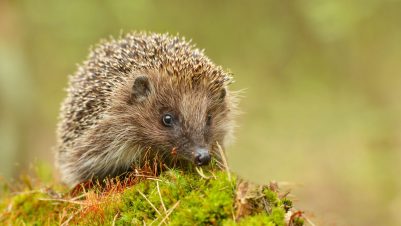Many animals and birds are extremely adaptable and I guess that adaptability is the driving force behind evolution. Sometimes it happens very quickly and at others over a much more protracted period of time. Organisms that can’t adapt to a changing environment have only one recourse: extinction.
Oystercatchers are wading birds that are essentially adapted to live at the coast, foraging for invertebrates such as ragworms by probing the sand below the high-tide mark with their relatively long and powerful bills. They are further adapted to the sea shore in that they lay their eggs on the ground in nothing more than a shallow scrape in the sand or shingle that serves as a nest.
Now, though, many oystercatchers have abandoned the seashore for the summer to move further inland to breed. I live 35 miles from the sea yet each summer several pairs of oystercatchers take up residence in the surrounding farmers’ fields and treat us to their wailing calls each morning and evening. Plus their alarm calls whenever potential predators such as crows or magpies appear throughout the day.
Inland they forage mainly on pastureland, here using their bills to probe for earthworms, the terrestrial equivalent of their natural food.
Secure
They lay their eggs anywhere they feel secure: a couple of years ago there was one sitting on a nest on the roundabout of a motorway slip road not far from us, and the local school had another pair nesting on the pebble strewn flat roof of one of its classrooms.
Finding the nest of an oystercatcher is not that easy but this year we hit the jackpot. The next door farmer ploughed a two-acre field next to our drive and planted turnips to feed his lambs on in the autumn.
A ploughed field is a pretty good substitute for a beach and it wasn’t long before I noticed that a pair of oystercatchers seemed to spend an awful lot of time here. Eventually I could see that one of them was “sitting” just on top of one of the furrows and was rarely away.
There are various dangers for ground-nesting birds including predatory mammals and birds which threaten both the incubating bird and, of course, the eggs. Many birds are therefore highly camouflaged, things like snipe and curlew, pheasants and partridges, but oystercatchers are strikingly black and white.
Perhaps that is why pheasants and the like will sit very tight when approached whereas I noticed that the oystercatcher would slip off its nest very early on if the farmer entered the field and scuttle away, calling, as though to draw attention away from the nest. Since the eggs themselves are fairly well camouflaged, it seems a pretty good strategy.
Protection
The other evening I noticed the neighbour going into the field with a tractor and disc harrow affair to hoe the weeds between the rows of turnips. I went over and explained about the nest and marked it with a blue electric fence pole stuck in the ground about six feet away. The incubating bird left the nest as soon as I approached and I took a few photos of the two eggs that she was sitting on.
I was very pleased to see the next morning that the turnips were hoed and the bird was back on its nest and that the blue pole had served its purpose.
It illustrates well the difficulties posed to ground-nesting birds by modern farming practices and equipment when people are pushed for time and do not have the same attachment to the land as when they worked with a horse and plough.
I have spoken to several older members of our community who can remember taking a horse-drawn plough round a curlew or corncrake nest or even lifting the eggs to the side and then replacing them after the plough had passed.
Changed days indeed.






